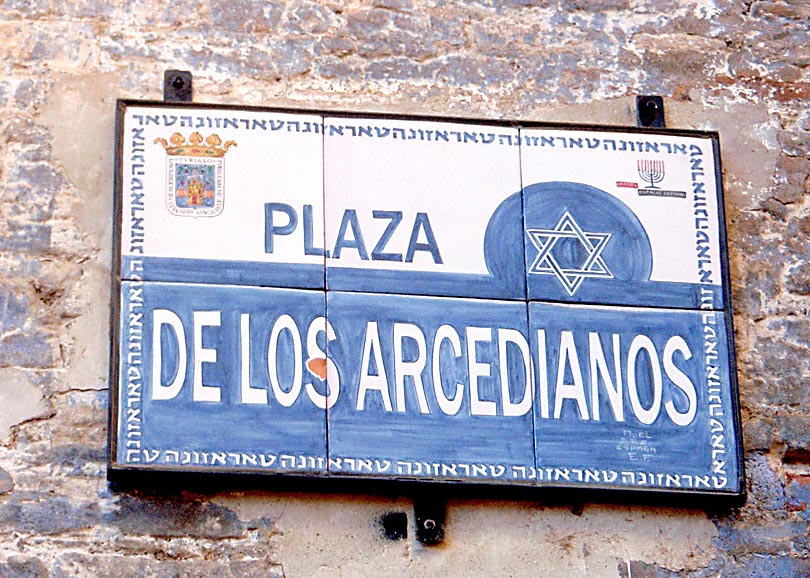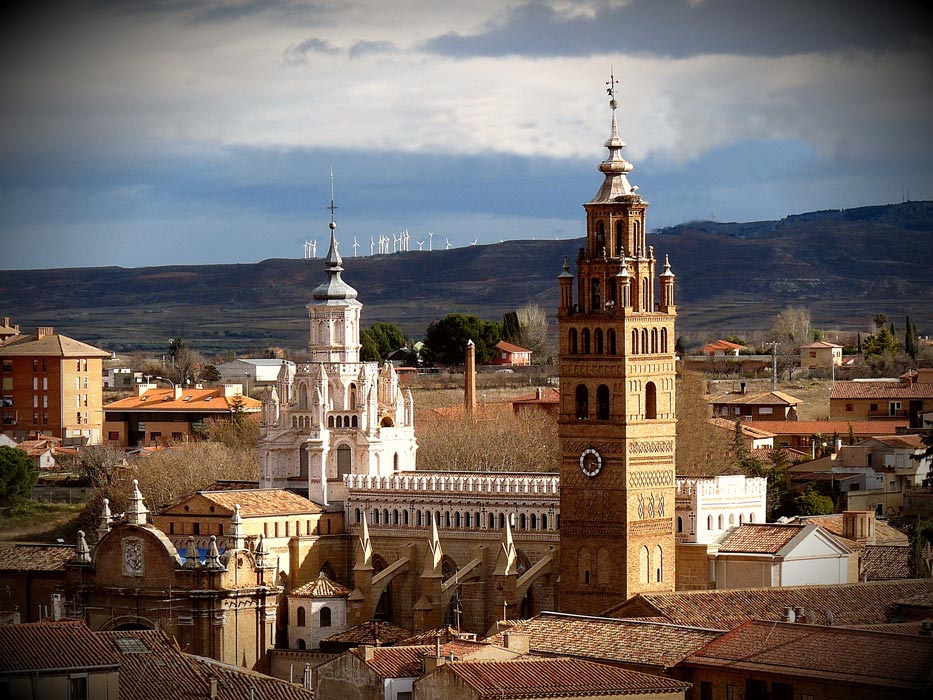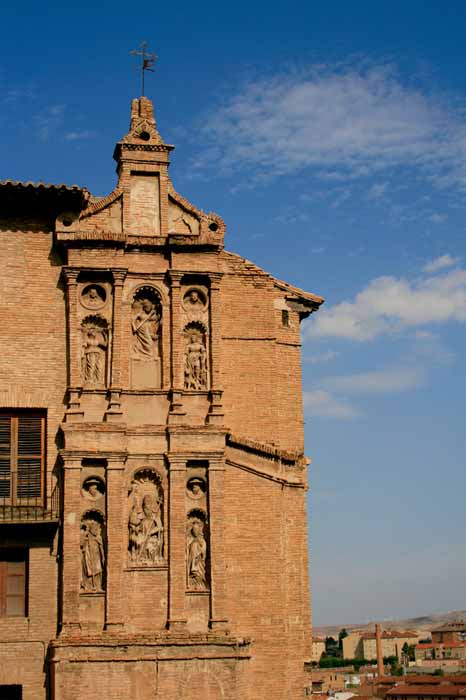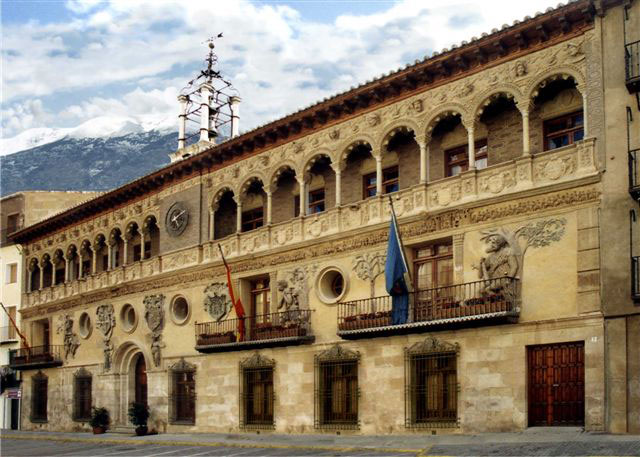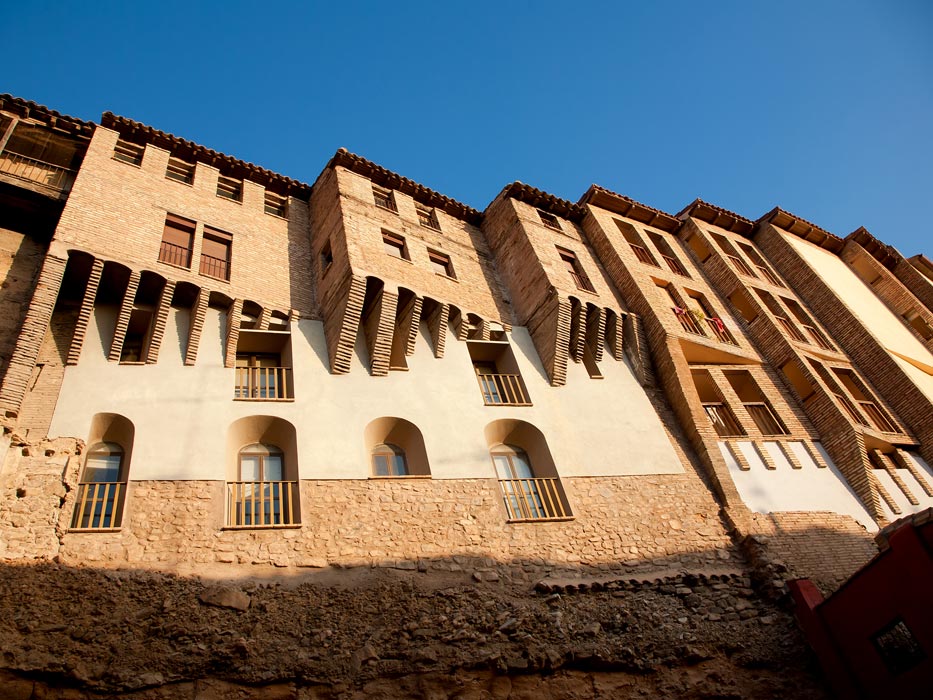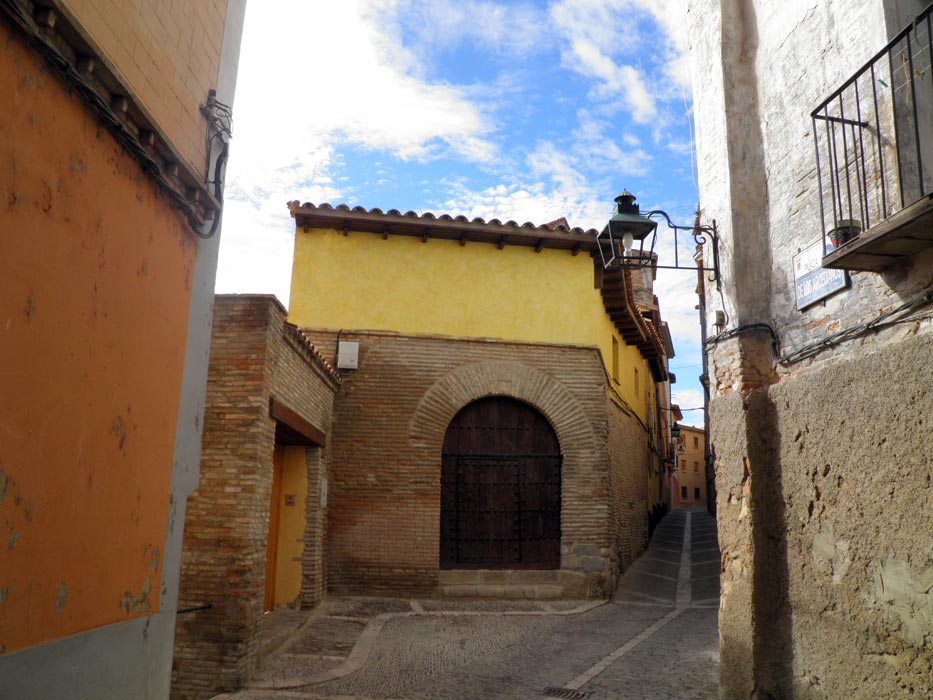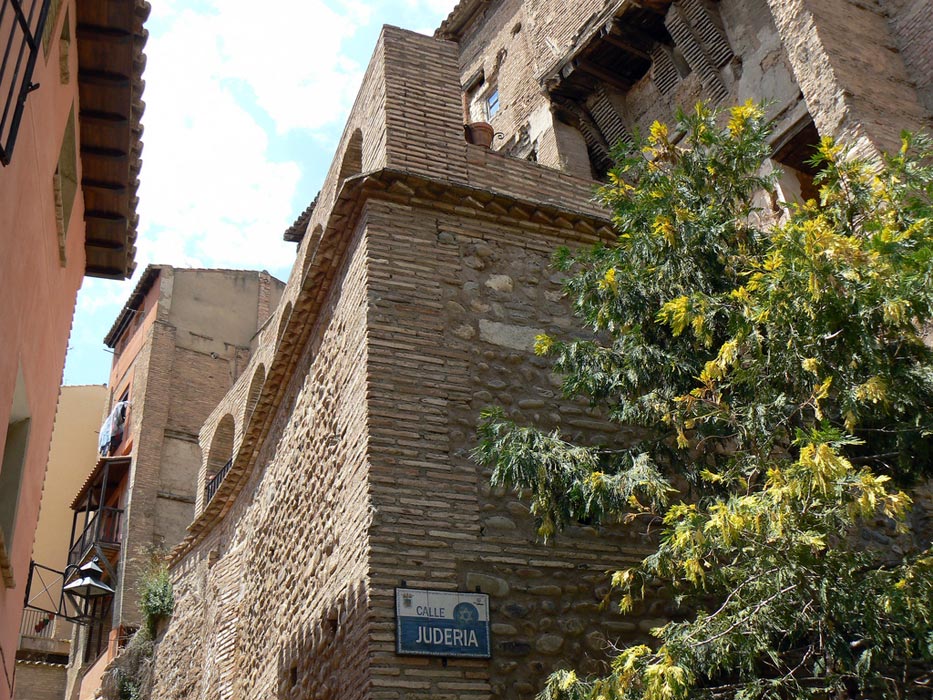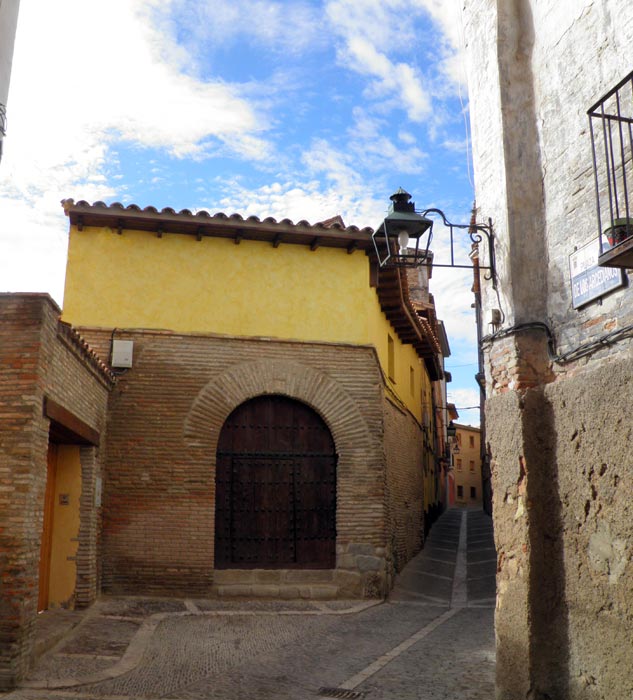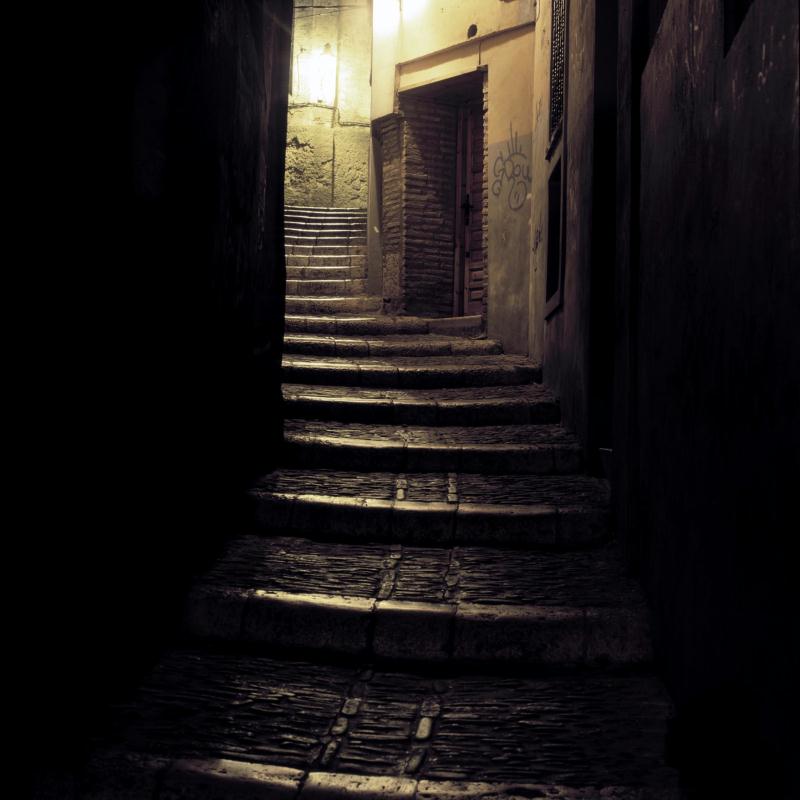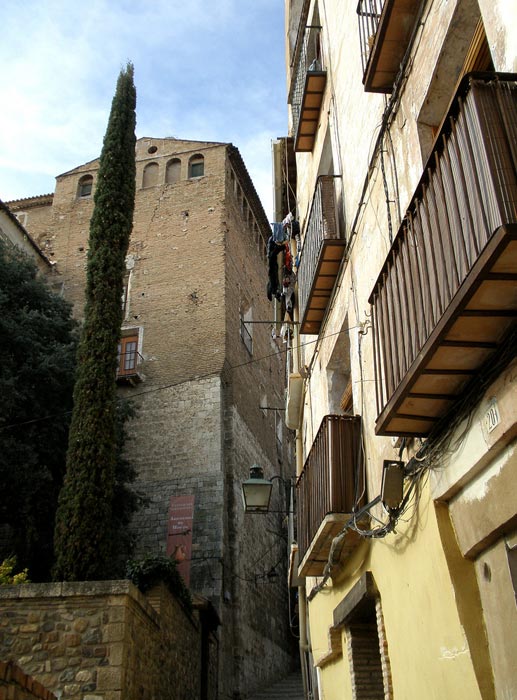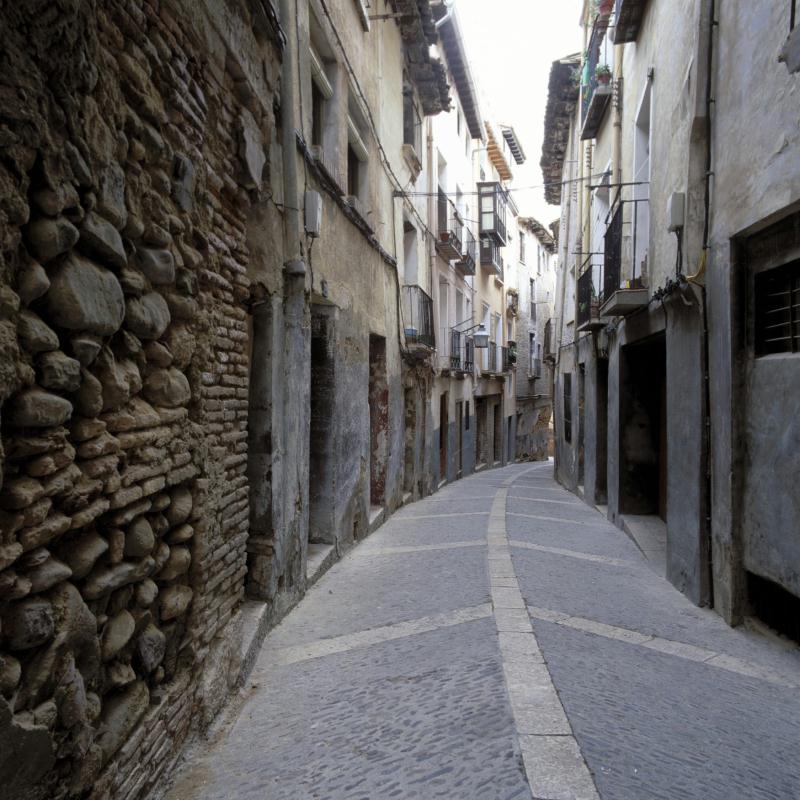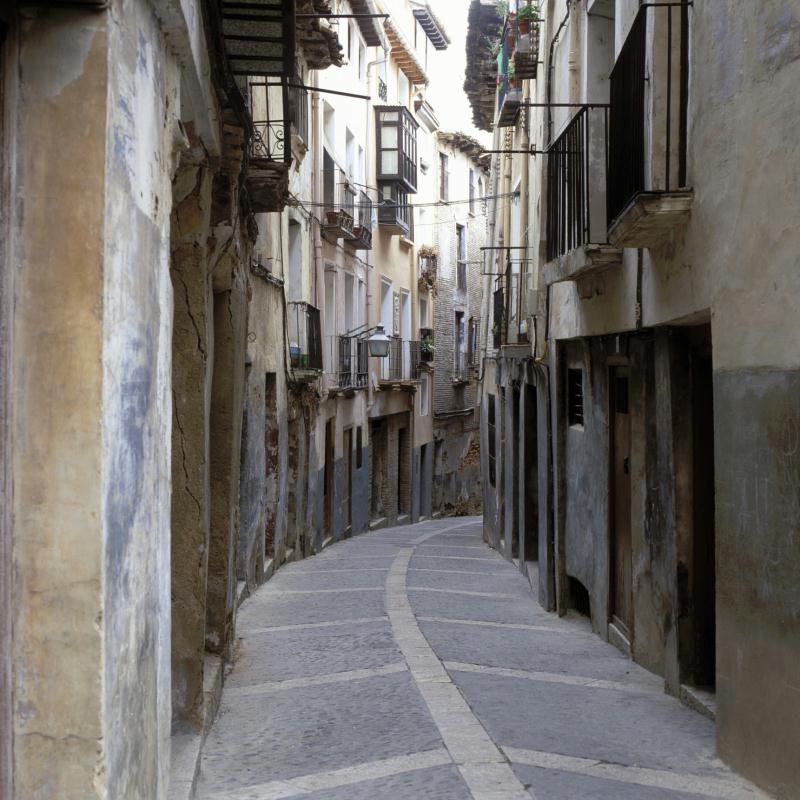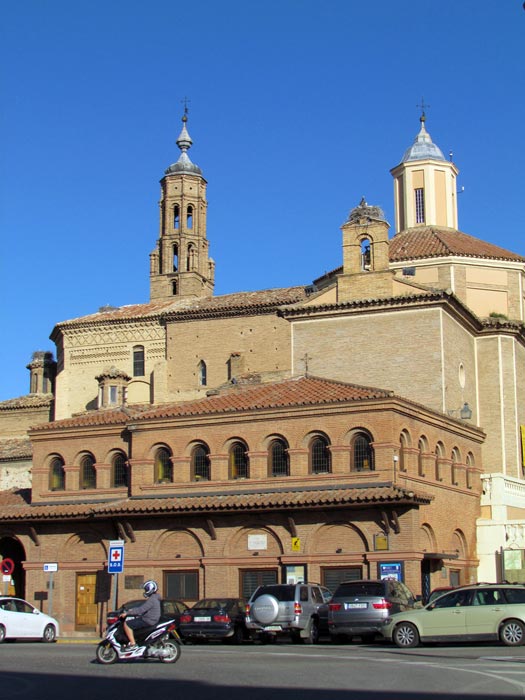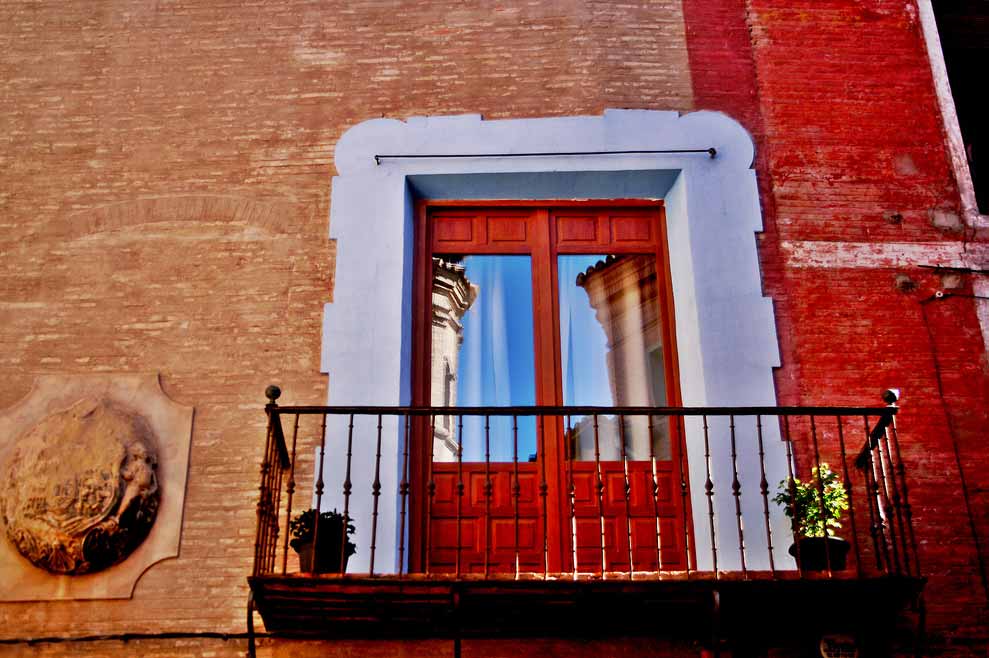Popularly known as Rúa (street), located under the old Suda or Moslem fortress, today
the Episcopal Palace and at the very feet of the extraordinary hanging houses in the
high zone of the city, the Old Jewish Quarter of Tarazona constitutes a closed space, away from the modernity and traffic, running
between narrow streets and steep steps which adapt as best they can to the lay of
the land. A historically strongly-rooted Jewish district which develops around the
two thoroughfares comprising Rúa Alta and Rúa Baja, today dedicated to the poet Gustavo
Adolfo Bécquer whose legends are alive and kicking in this land.
A tow-thousand year old city whose rich heritage with a pronounced Mudejar leaning means it is well worthy of the title of Historic- Artistic Site, Tarazona
uses the legend behind its foundation on its municipal coat-of-arms: Tubal Cain me aedificauit. Hercules me reaedificauit. Tubalcaín me edificó y Hércules
me reedificó. It was settled by the Celtiberians who called it Triasu or Driasu, Romans who gave it the name of municipium Tvriaso, Visigoths, Moslems and Jews who called it Tirasone and Christians who named it Tirasona, from which the modern name of Tarazona derives. The urbanistic layout of the city
still bears the marks of the passage of these last three cultures in medieval and
modern times.
Pliny the Old in his NaturalHistory informs us that Tarazona was a city under Roman law and that it forged high-quality
iron tools. Although the Roman urbanism of the city is still not known in detail,
it would seem that in the late century I B.C. the urban area was situated on the left
bank of the River Queiles around Tudela street as far as Alta street, from Carmen
street to Visconti and Marrodán, Quiñones and Cañuelo street. Nevertheless, the city
also extended on the right bank of the Queiles as is borne out by archaeological findings
discovered in Pradiel at Eguarás Palace, in the Cathedral, the Zaragoza Road, Borja
street, Faceda street, Cinco Villas street and in the Industrial Estate. This prolongment
could be related with the layout of the road which went from Caesaragusta (Saragossa) to Asturica Augusta (Astorga).
As from the 3rd century the city was progressively abandoned owing to the political
instability of the Roman Empire, attacked by the Barbarians and the Barbarians. The latter are documented in Tarazona in 449 when Bishop León was murdered.
In any case, it is likely that the Jewish presence dates back to Visigoth times or even the LateEmpire, consolidating under Moslem rule, though there are far more references after the
city capitulated to Alfonso I the Battler in 1119. Once Tarazona had been integrated into the Visigoth defensive apparatus,
the minimum conditions for an episcopal city were restored whose dynamism was borne
out by the minting of gold coins in around the 7th century during the reign of Recaredo
(586-601).
In 713 Tarazona fell to the Moslem armies and the town planning of the city adapted to Islamic features. Its inhabitants converted
to Islam, public baths and cemeteries were created and the Zuda was erected, a palace or fortress which served as the headquarters of the military governors
consisting of a rectangular surface dug out of a very high sedimentary rock on the
terrace of Queiles which would form part of a larger walled enclosure, situated in
the Cinto district.
To be precise, when Benjamín of Tudela commenced his journey in 1165 the aljama of Tarazona had already been fully formed after the conquest of the city by Alfonso I, King of
Aragón and Navarre, in 1119. After the conquest, the King donated to the bishop the
tax and commercial rights of the aljama which allowed him to levy taxes on the Jews of his diocese. This privilege was of
paramount importance as the Jewish quarter of Tarazona was one of the most significant in Aragón in the first half of the 13th century. The power of its Jewish quarter at this time is borne out by the hefty taxes it paid to the Military Order of the Temple until 1312 when it was dissolved. Amongst the members of its Jewish quarter there were intellectuals and men of great importance such as doctors and builders as architects used to be called. There were also – not common in the Jewish area – plastic artists such as the painter of retables Juan Leví at the end of the 14th century whose works can be seen at Tarazona cathedral.
Since the taxation of property of 1271 Tarazona features amongst the sixteen royal
communities in Aragón with mean taxation of 3% of the ordinary and 2% of extraordinary
subsidies in a situation similar to that of Ejea de los Caballeros, whilst the local
Mudejar community paid half of these values. In the Hearth tax carried out in 1386 and 1404,
the city (excluding nobles and ecclesiastical staff) was attributed a total of three
hundred houses with jews and Moors. Thanks to an internal accounting record or pinqas conserved at the National Library of Jerusalem, we now that the Jewish quarter at this time was made up of fifty two homes with around two hundred and twenty five
people, in other words, 15% of the total population of the city which amounted to
1,300 people. In the late 15th century the Jewish population had risen to more than
seventy families.
After the city´s integration into the Crown of Aragon, Tarazona experienced its so-called
Golden Agebetween 1213 and 1283, decades in which the Jews of the city proved to be a key element, contributing to the workings of the administration and finances of the city. It was
here that Moses de Portella was born who liked to sign with his Arab first name Muça
in view of the prestige que the Arab language had as a language of culture. Moses
de Portella came from a wealthy family familia that had got rich from the cereal grain
trade, money-lending and the royal rents. The position of the Portella family was such that it paid a fifth of the total taxes of the aljama as from 1267. It was largely because of the Portella that Pedro III showed interest in organising the aljama and in 1285 he ratified a general ruling establishing the payment procedures for
taxes on real estate and personal property and which stipulated the nature of the
people exempt from said encumbrances. The decline of the Portella was concurrent with
the decline of the Jews of Tarazona, brought to their knees by the Black Death of
1348 with further outbreaks in 1362 and 1369. This, combined with a string of poor
harvests, led to a fall in the numbers of the Jewish and Christian communities. In
actual fact, the Jewish quarter of Tarazona would have disappeared if not for immigration from France after the expulsion
of the Jews from that country and the attacks suffered by the Jewish quarters in Navarre,
circumstances which brought new inhabitants to the Jewish quarter.
In the war between Pedro I the Cruel, King of Castile and Pedro IV, King of Aragón,
(which was fought over commercial dominance in the Mediterranean between the Castilian-Genovese
fleet and the Aragonese fleet), the city was sacked by the Castilian troops on several
occasions between 1357 and 1360. The Jewish district fared no better as soldiers came
into the Jewish quarter unopposed as there were no Cinto walls, a well-fortified place which could be defended against any army, however big. When the war with Castile ended in 1378, Pedro IV throughout about whether it would
be worth dismantling the Jewish quarter in view of the level of destruction it had suffered during Castilian sacking, but
he decided its repopulation would be more to his advantage. In the license to rebuild
the synagogue granted in Tarazona by Bishop Pedro Pérez Calvillo on May 10th 1370 the state of
the temple was described:
Fuisse et esse dirutam et destructam ex eo quod in occupacione dicte civitate Tirasone
jacta per dominum Petrum, quondam, regem Castelle, castellani subditi dicti regnis
ipsam sinagoga conbursserunt et destruxerunt.
The rebirth of the Jewish district was boosted by the arrival of the Rabbi from Tudela Shem Tov ben Shaprut, a doctor and Talmudist who was seeking asylum after
the disputation of Pamplona with Cardinal Pedro Martínez de Luna (1375). It was here
where he wrote his «Eben bohano Piedra de toque». Along with Rabbi Jehudá Saladín, they were consulted about legal matters and a modest centre was formed
where works were translated from Arab to Latin and Hebrew.
The aljama of Tarazona promulgated hordinamientos y secamas a proveyto et utilidad de los ditos jodios. The one issued in 1285 forbade, inter alia, bright clothes from being worn and that
of 1378 banned children from wearing new clothes when circumcised. Their autonomy
was established in the act of taking office of the bailiff, committed to loyally serving and protecting said aljama according to Jewish law. The internal organisation, created in the 14th century, was based on the Assembly
of the aljama, the Council and the military governors as well as various functionaries assigned
to administrative tasks (the tax collector, responsible for receiving taxes and accounting),
judicial staff (albedín) and religious staff (Rabbis, shamashim etc.). The internal documents were issued by the sofer or notary.
The attacks on other Jewish quarters in the Crown of Castile, such as those of 1391,
barely impacted Tarazona thanks to the protection of the council and the financial
support the Jews were providing to the reconstruction of the city. This is why in
said same year of 1391 the chapters of protection of the Jewish quarterwere signed in which it defence and the application of the rights of the charters
are ensured, in addition to the active protection of the Crown. However, nothing would
ever be the same again. Some powerful families in commercial life now took a back
seat such as the Laquef, Abençahadía or the Abjoxar and their presence on the lending market fell from 50% to 10%. After the Disputation
of Tortosa (1413-1414), conversions to Christianity were not on a large scale like
in Daroca or Calatayud, but they did diminish the strength of the Jewish quarter. In 1430 the situation had calmed down and the communication between Jews and converts was good.
Thanks to the fiscal policy of Alfonso V and the attribution of a more participative institutional framework, the Jewish quarter of Tarazona attained a certain social equilibrium which would result in something
of a boom. At the request of the Jews, in 1457 Alfonso V granted exemptions to relieve the tax burden of the Jewish quarter. The King´s aim was to boost commercial life and the economic activity of the cities of Aragón and he believed that the Jewish quarters had a major role
to play to achieve this buoyancy. Juan II continued these policies, creating the New
Jewish quarter. The extent of new neighbourhood was reflected by the gift carried out at the celebration
of Christmas to the justice offices, jury, provosts and the cathedral´s chapterhouse, comprising around sixty
pairs of hens and capons.
The setting up of the Court of the Holy Office in 1484, with its headquarters at the
Episcopal Palace, spelled the end of cohabitation in the city. During the 16th century members of
the convert families Santa Fe, Santángel and Santa Cruz were brought to court, but
also other families from the diocese such as the Aibar, Andrés, Casado, Cortés, Cubero,
Liñán, López and Pomar. The converts retained their Jewish festivals and customs, believing that both religions were valid,
as good Jews could be saved according to their laws just as good Christians could be
under theirs. Once the expulsion had been decreed, part emigrated to Tudela or Cascante whilst others were to disperse
from the ports of Tortosa and Barcelona all around the Mediterranean, with Italy being
the most popular port of call. Concurrently, the 40 or 50% who remained agreed to be christened and converted to Christianity.


